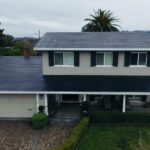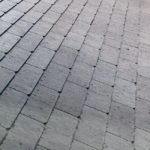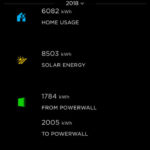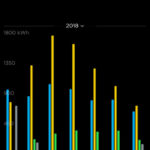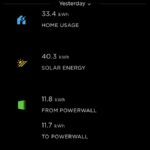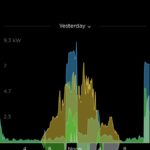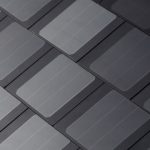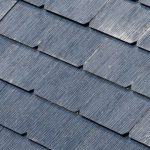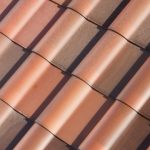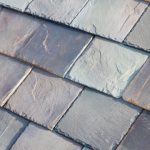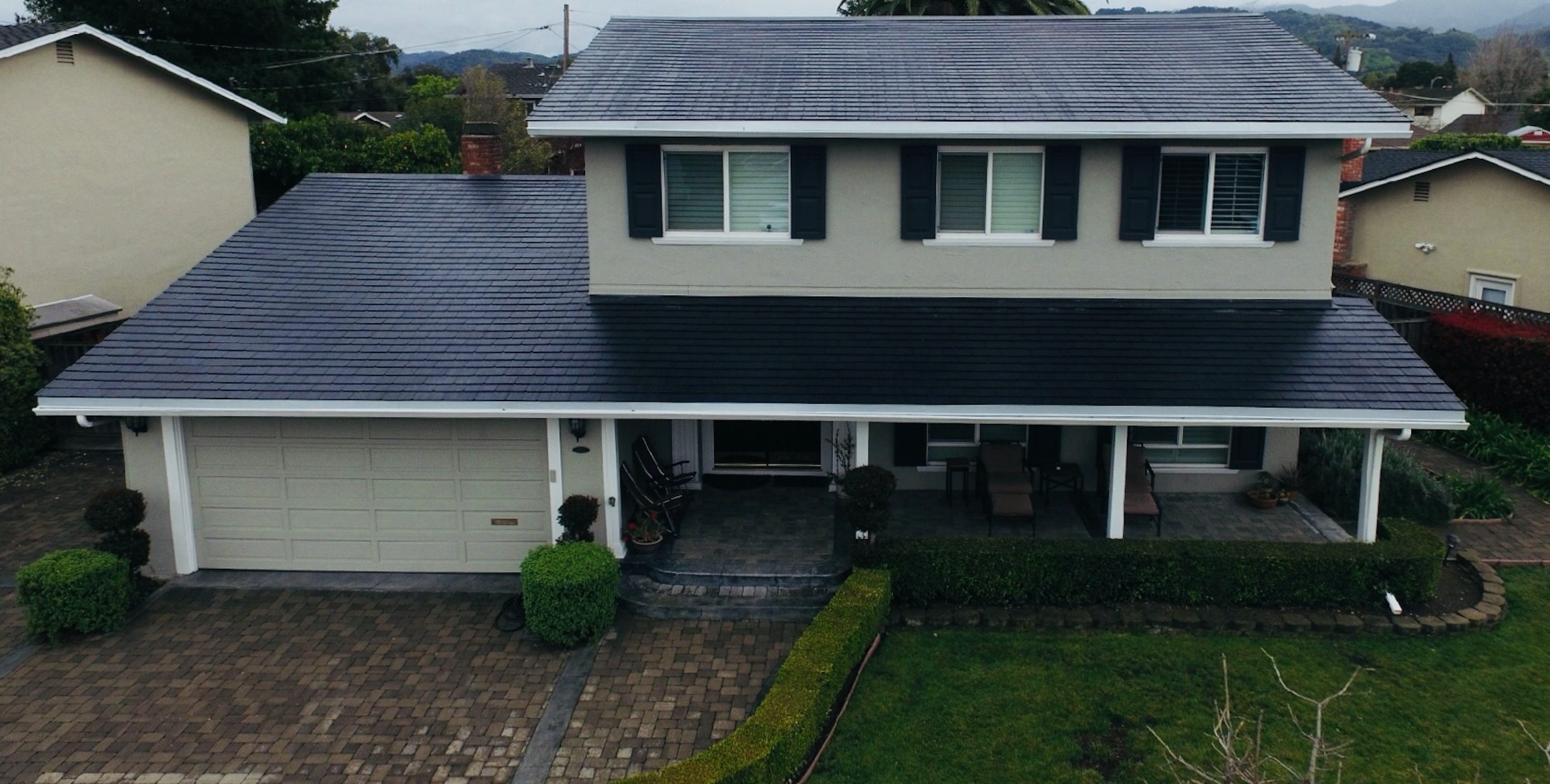
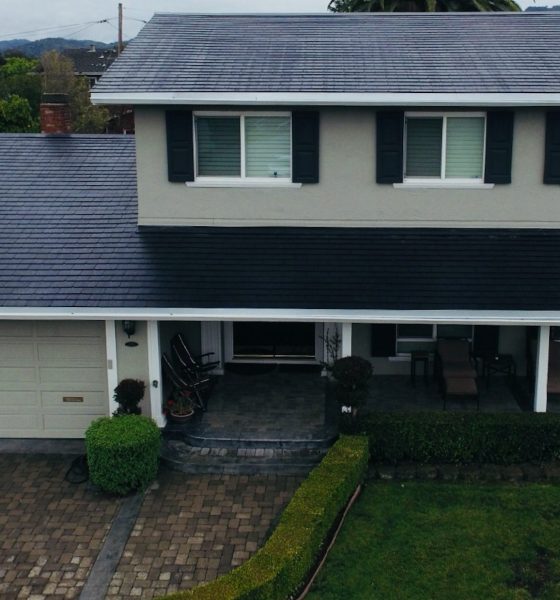
Energy
Tesla Solar Roof long-term review: Insights from a homeowner’s journey with Elon Musk’s solar tiles
If recent announcements by Tesla are any indication, the Solar Roof tiles will see a production ramp next year. Unveiled in October 2016, the Solar Roofs, which are PV modules that have the appearance of traditional roofing materials, were received warmly, with Tesla noting that the product was sold out “well into 2018” within the first few weeks of reservations being opened.
One of these reservation holders was Amanda Tobler. After initially living in a rental house from 2002 to 2004, Amanda and her family moved to a CA townhousein 2004, where they stayed for 12 years. The Toblers attempted to get solar panels installed on their townhouse then, though they were unsuccessful due to the area’s homeowners association prohibiting rooftop solar systems. Things changed in 2016, when Amanda and her family moved to a two-story suburban home in the Bay Area. This time around, the Toblers was free to add a solar system for their house.
The home that the family acquired, which was built in 1965, had an aging stamped metal roof that was nearly ready for replacement. In an emailed statement to Teslarati, Amanda noted that when they heard about the Solar Roof tiles, her family immediately thought that the product would be a perfect fit for their new home. Within days of Tesla opening reservations for the shingles in May 2017, the Toblers put down their $1,000 deposit.
In July 2017, Tesla sent someone over the home to conduct a site survey. As a way to determine the size of the PV system which would best fit the Toblers’ needs, Tesla asked for copies of past utility bills. Amanda notes that her family actually consumes a fair amount of power every month, especially since they charge two plug-in vehicles — a Nissan Leaf and a Chrysler Pacifica Hybrid — on a consistent basis. Considering the family’s average energy consumption, Tesla opted to install a 9.9 kW Solar Roof system on the house, paired with one Powerwall 2 unit.
- A Solar Roof tile installation on a residential unit. [Credit: Amanda Tobler]
- A Solar Roof tile installation on a residential unit. [Credit: Amanda Tobler]
- A Solar Roof tile installation on a residential unit. [Credit: Amanda Tobler]
The Toblers’ home fitted with Tesla’s “Textured” Solar Roof tiles. [Credit: Amanda Tobler]
Tesla only manufactures two variants of the Solar Roof tiles today — Textured and Smooth — though other options such as Tuscan and Slate are due to enter production in the near future. In Amanda’s case, she opted for the Textured Solar Roof variant. Just as luck would have it, the Toblers’ home ended up becoming the first residential Solar Roof installation in the country, partly due to the roof’s simple design and the house’s proximity to the Fremont factory.
“I was told that we were chosen because we live in the Bay Area, which is convenient to the Tesla factory in Fremont. Additionally, we have simple roof lines, and they wanted a straightforward install in the beginning,” Amanda stated.
The Solar Roof installation took place in early March 2018. The entire process took about three weeks to complete, partly due to rains and Tesla’s discovery of a cedar shake roof underneath the house’s metal roof. Despite her house being built in 1965, and despite Tesla having to haul away two roofs instead of one, Amanda notes that the installation process, including the setup of the Powerwall 2 unit, remained seamless nonetheless. Even the permits for the solar system, which are required for homeowners, were handled by the electric car maker.
“Tesla took care of all permitting and getting permission to operate the solar roof. We did e-signing for plenty of documents in this process, but I didn’t have to complete any of them outside of providing a signature and date,” Amanda noted.
The Toblers were permitted to activate their Solar Roof tiles two weeks after the project was complete. Considering that the roof covered around 2,000 square feet, and that 40% of the tiles were solar, Amanda notes that the $62,000 she paid for the 9.9 kW system was not too far from the cost of a new premium roof and conventional solar panels. That said, she did mention that if her house didn’t really need new roofing, she probably would have opted for traditional solar panels instead to save on costs. Nevertheless, the homeowner pointed out that the aesthetics and functionality of the Solar Roofs have been worth the investment so far.
- The average stats for the Toblers’ Solar Roof over the past seven months. [Credit: Amanda Tobler]
- The average stats for the Toblers’ Solar Roof over the past seven months. [Credit: Amanda Tobler]
- A sample of the Solar Roof tiles’ daily stats. [Credit: Amanda Tobler]
- A sample of the Solar Roof tiles’ daily stats. [Credit: Amanda Tobler]
At its peak, the Toblers’ Solar Roof tiles provided enough power for the family’s needs. [Credit: Amanda Tobler]
“The main value is that we got the new roof we needed and the solar we wanted in a slick package. Of course, the product is considerably more expensive than regular solar panels—you’re getting a roof and solar panels. If you consider the cost of purchasing a high-end roof with solar panels in the Bay Area, the cost wouldn’t be that far off from the cost of the Solar Roof.”
The Solar Roof tiles have held up well over the past seven months since the system was installed. The day after the Solar Roof tiles were activated, the homeowner woke up to her roof producing 4 kW of power, with 0.4 kW flowing straight into the house and the rest charging her Powerwall 2. At its peak during summer in June and July, the Solar Roof tiles were producing about 60 kWh in one day, which was more than enough to power the Toblers’ house and their two plug-in vehicles. As the days got shorter and more overcast amidst the approaching winter, though, the Solar Roof tiles generated less energy, now producing about 20 kWh a day.
Amanda’s observations with her Solar Roof tiles echo those of another Solar Roof early adopter, Tri Huynh from Northern CA. In an interview with Alex Guberman of E for Electric earlier this year, Tri noted that his Solar Roof installation, which covers his 1,000 square foot roof, produces about 3 kW during days when skies are overcast. While the generated power is not enough to charge his three Powerwall 2 batteries, Tri noted then that his Solar Roof helps him lower his electricity bill nonetheless.
When Elon Musk unveiled the Solar Roof tiles, he candidly remarked that the shingles, if they prove successful, could end up being a “Keeping up with the Joneses” situation. In Amanda’s case, her Solar Roof had attracted a notable amount of curiosity from her neighbors, especially when the system was being installed. Once it was operational, interested members of her community also paid a visit to Toblers’ home to learn about how the Solar Roof worked. That said, the homeowner notes that the attention her Solar Roof attracts has mellowed down since.
Tesla’s Solar Roof variants — Smooth, Textured, Tuscan, and Slate. [Credit: Tesla]
While the Solar Roof has performed well since it went online earlier this year, Amanda notes that the system still has some room for improvement. Her Powerwall 2, for one, faults about once a month, which makes the battery storage unit appear like it had lost connection with the system. So far, the Toblers have been manually resetting the Powerwall 2 to address the fault. In the event that the family is not home, Amanda states that the system eventually detects the error and automatically resets the Powerwall 2 after about four hours. Amanda describes these faults as a “minor annoyance,” particularly since the rest of the system has been consistently operating smoothly.
Tesla’s energy business, led by industrial-grade batteries like the Powerpack and novel residential products like the Solar Roof, is expected to see notable growth in the coming years. Billionaire investor Ron Baron, for one, estimates that Tesla Energy would likely be worth $500 billion on its own by 2030, equal to his estimates for the company’s more well-known electric car business. Considering that Tesla’s electric cars and energy products form an ecosystem of renewable solutions, the adoption of products like the Solar Roof would likely be as quick as the products’ production ramp.
During Tesla’s third-quarter earnings call, Elon Musk explained that the production of the Solar Roof is taking longer than expected due to the tiles’ long development cycle. The Tesla CEO did state, though, that Solar Roof production should see a production ramp in 2019. This was highlighted in a later announcement on Twitter, with Musk listing the solar tiles as one of Tesla’s high-priority products, directly after the Model Y. With Tesla focusing on both its electric car and energy business in 2019, the number of customers buying into the full Tesla ecosystem would likely increase. Amanda, for her part, notes that her family might do just that.
“The success of the vehicles played a big part of us choosing to trust Tesla in being a part of early solar roof adopters. It is very possible that we’ll become Tesla vehicle owners in the future,” she said.

Cybertruck
Tesla updates Cybertruck owners about key Powershare feature

Tesla is updating Cybertruck owners on its timeline of a massive feature that has yet to ship: Powershare with Powerwall.
Powershare is a bidirectional charging feature exclusive to Cybertruck, which allows the vehicle’s battery to act as a portable power source for homes, appliances, tools, other EVs, and more. It was announced in late 2023 as part of Tesla’s push into vehicle-to-everything energy sharing, and acting as a giant portable charger is the main advantage, as it can provide backup power during outages.
Cybertruck’s Powershare system supports both vehicle-to-load (V2L) and vehicle-to-home (V2H), making it flexible and well-rounded for a variety of applications.
However, even though the feature was promised with Cybertruck, it has yet to be shipped to vehicles. Tesla communicated with owners through email recently regarding Powershare with Powerwall, which essentially has the pickup act as an extended battery.
Powerwall discharge would be prioritized before tapping into the truck’s larger pack.
However, Tesla is still working on getting the feature out to owners, an email said:
“We’re writing to let you know that the Powershare with Powerwall feature is still in development and is now scheduled for release in mid-2026.
This new release date gives us additional time to design and test this feature, ensuring its ability to communicate and optimize energy sharing between your vehicle and many configurations and generations of Powerwall. We are also using this time to develop additional Powershare features that will help us continue to accelerate the world’s transition to sustainable energy.”
Owners have expressed some real disappointment in Tesla’s continuous delays in releasing the feature, as it was expected to be released by late 2024, but now has been pushed back several times to mid-2026, according to the email.
Foundation Series Cybertruck buyers paid extra, expecting the feature to be rolled out with their vehicle upon pickup.
Cybertruck’s Lead Engineer, Wes Morrill, even commented on the holdup:
As a Cybertruck owner who also has Powerwall, I empathize with the disappointed comments.
To their credit, the team has delivered powershare functionality to Cybertruck customers who otherwise have no backup with development of the powershare gateway. As well as those with solar…
— Wes (@wmorrill3) December 12, 2025
He said that “it turned out to be much harder than anticipated to make powershare work seamlessly with existing Powerwalls through existing wall connectors. Two grid-forming devices need to negotiate who will form and who will follow, depending on the state of charge of each, and they need to do this without a network and through multiple generations of hardware, and test and validate this process through rigorous certifications to ensure grid safety.”
It’s nice to see the transparency, but it is justified for some Cybertruck owners to feel like they’ve been bait-and-switched.
Energy
Tesla starts hiring efforts for Texas Megafactory
Tesla’s Brookshire site is expected to produce 10,000 Megapacks annually, equal to 40 gigawatt hours of energy storage.
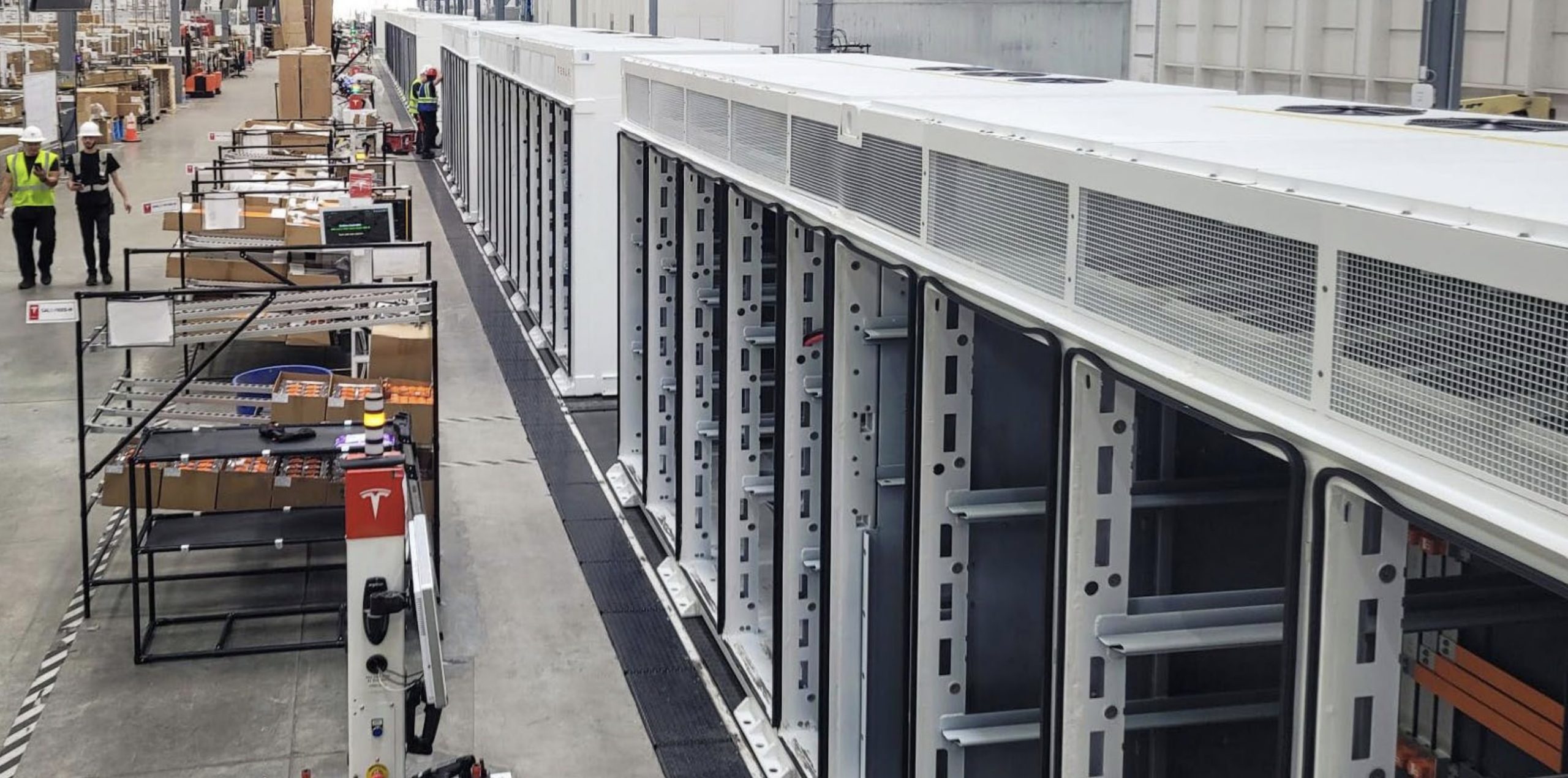
Tesla has officially begun hiring for its new $200 million Megafactory in Brookshire, Texas, a manufacturing hub expected to employ 1,500 people by 2028. The facility, which will build Tesla’s grid-scale Megapack batteries, is part of the company’s growing energy storage footprint.
Tesla’s hiring efforts for the Texas Megafactory are hinted at by the job openings currently active on the company’s Careers website.
Tesla’s Texas Megafactory
Tesla’s Brookshire site is expected to produce 10,000 Megapacks annually, equal to 40 gigawatt hours of energy storage, similar to the Lathrop Megafactory in California. Tesla’s Careers website currently lists over 30 job openings for the site, from engineers, welders, and project managers. Each of the openings is listed for Brookshire, Texas.
The company has leased two buildings in Empire West Business Park, with over $194 million in combined property and equipment investment. Tesla’s agreement with Waller County includes a 60% property tax abatement, contingent on meeting employment benchmarks: 375 jobs by 2026, 750 by 2027, and 1,500 by 2028, as noted in a report from the Houston Business Journal. Tesla is required to employ at least 1,500 workers in the facility through the rest of the 10-year abatement period.
Tesla’s clean energy boom
City officials have stated that Tesla’s arrival marks a turning point for the Texas city, as it highlights a shift from logistics to advanced clean energy manufacturing. Ramiro Bautista from Brookshire’s economic development office, highlighted this in a comment to the Journal.
“(Tesla) has great-paying jobs. Not just that, but the advanced manufacturing (and) clean energy is coming to the area,” he said. “So it’s not just your normal logistics manufacturing. This is advanced manufacturing coming to this area, and this brings a different type of job and investment into the local economy.”
Energy
Tesla and Samsung SDI in talks over new US battery storage deal: report
The update was related by industry sources and initially reported by South Korean news outlets.

Recent reports have suggested that Tesla and Samsung SDI are in talks over a potential partnership to supply batteries for large-scale energy storage systems (ESS).
The update was related by industry sources and initially reported by South Korean news outlets.
ESS batteries to be built at Samsung’s Indiana plant
As noted in a report from Korea JoongAng Daily, the demand for energy storage systems has been growing rapidly in North America, thanks in no small part to the surge in AI investments across numerous companies. With this in mind, Tesla has reportedly approached Samsung SDI about a potential battery supply deal.
The deal is reportedly worth over 3 trillion Korean won (approximately $2.11 billion) and will span three years, according to The Korea Global Economic Daily. A battery supply deal with Samsung SDI could make sense for Tesla as the company already has a grid-scale battery, the Megapack, which is perfect for industrial use. Samsung SDI could simply supply cells for the EV maker.
Production of the batteries would reportedly take place at Samsung SDI’s joint venture factory with Stellantis in Indiana, which is currently under construction. Samsung SDI recently announced plans to use part of that plant’s EV lines to produce cells for ESS, with a targeted capacity of 30 GWh by the end of next year.
Tesla and Samsung’s partnership
At present, only a handful of manufacturers, including Korea’s LG Energy Solution, Samsung SDI, SK On, and Japan’s Panasonic, are capable of producing energy storage-scale batteries domestically in the United States. A Samsung SDI official issued a comment about the matter, stating, “Nothing has been finalized regarding cooperation with Tesla.”
The possible energy storage system deal adds another layer to Tesla’s growing collaboration with Samsung, which is already in line as a partner in the upcoming production of Tesla’s AI5 and AI6 chips. Early sample manufacturing of the AI6 is expected to begin in South Korea, with mass production slated for Samsung’s Texas-based Taylor foundry when it starts operations.
The AI6 chip will power Tesla’s next wave of high-volume projects, including the Optimus humanoid robot and the autonomous Cybercab service. Musk has called the partnership with Samsung a “real collaboration,” adding that he personally plans to “walk the line” at the Taylor facility to speed up progress.
